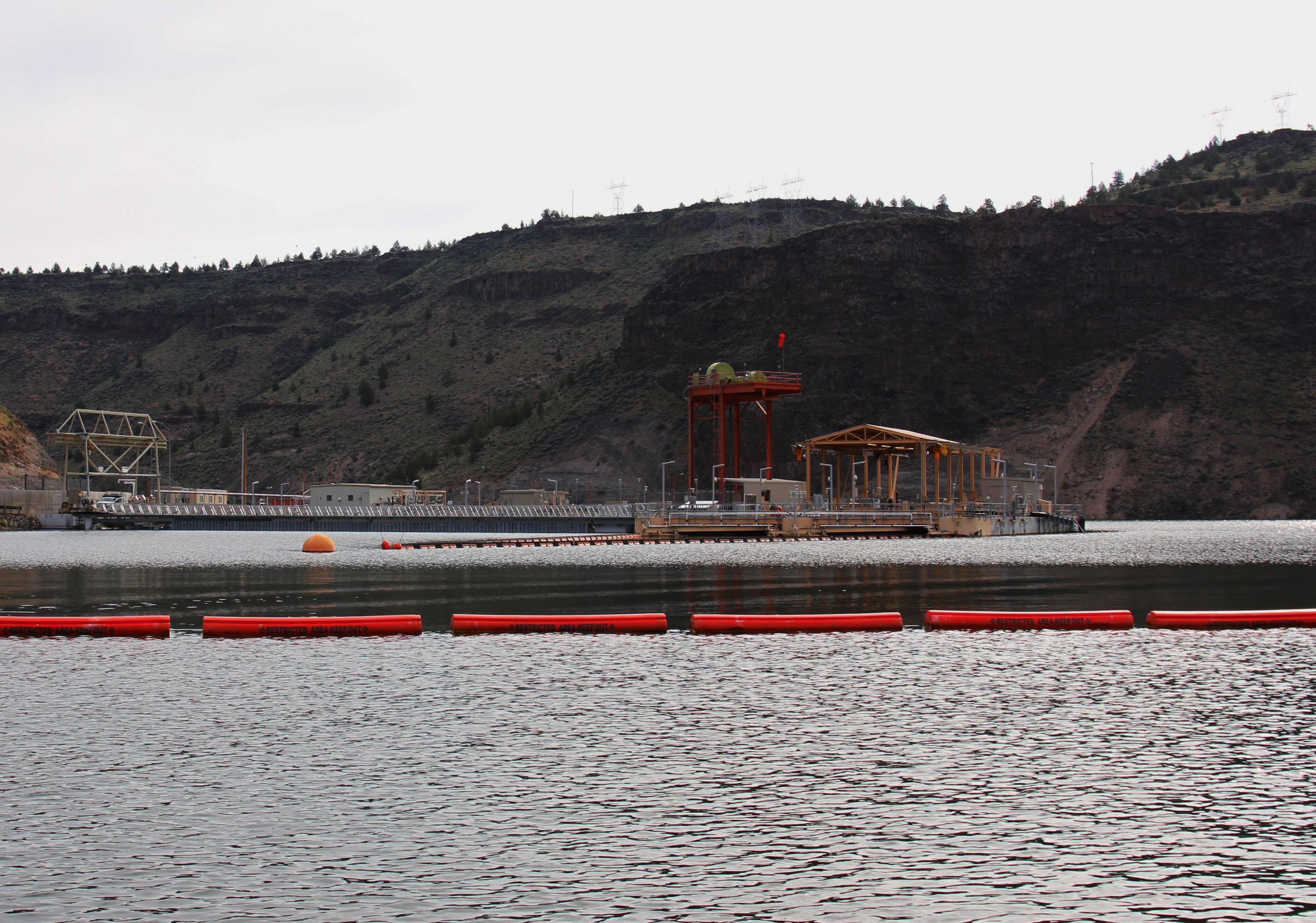
A view of the selective water withdrawal tower from behind Round Butte Dam. The 273-foot underwater device mixes warm reservoir surface water with cold bottom water.
Amanda Peacher / OPB
A judge has ruled that a federal lawsuit against Portland General Electric over water quality on the Lower Deschutes River can move forward.
In a lawsuit filed in August, the Deschutes River Alliance claimed PGE violated water quality standards for several years after installing a water-mixing device at Round Butte Dam. That's one of three dams operated by the utility along the lower Deschutes River.
The device is designed to mix warm water from the top of the reservoir with cold water from the bottom, to more closely mimic temperatures of a natural river.
PGE had asked U.S District Court Judge Michael Simon to dismiss the case, on the grounds the court did not have subject matter jurisdiction to hear the case.
The mixing device, also referred to as a “selective water withdrawal tower,” blends water from the Metolius, Crooked, and Middle Deschutes tributaries.
The water temperatures in the three arms of the lower Deschutes tend to vary significantly, with the Metolius typically the coolest and the Crooked River the warmest. The three tributaries also carry different nutrient loads: the Crooked River runs through agricultural areas and tends to include fertilizer and other agricultural runoff, while the other two tributaries tend to be cleaner.
Related: Snowmelt Fills Crooked River To Record Levels
Prior to the installation of the mixing tower in 2009, the water that came out of the Round Butte Dam and flowed downstream was the cool, clean water from the Metolius. But since the installation of the device, water quality has suffered below the dam, the lawsuit alleges.
Jonah Sandford with Deschutes River Alliance said the ruling is an affirmation for their case.
“We think it’s a really important first step in recovering water quality and ecology below the dams,” Sandford said.
In a email to OPB, PGE said it would review the judge's actions and evaluate how to proceed.
"We’re confident that we’re in compliance with our license and all applicable environmental standards in our operation of the project, and will contest the allegations in the lawsuit in due course," PGE said in the statement.
The utility pointed out that it works collaboratively with the Confederated Tribes of Warm Springs and dozens of state, local and federal agencies and conservation organizations to promote healthy fisheries and river health on the lower Deschutes.